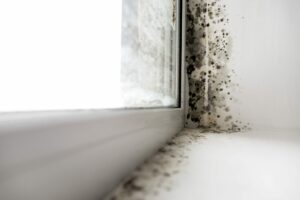When it comes to taking care of your child’s teeth, most parents understand the importance of limiting their sugar intake and encouraging a daily brushing and flossing routine. However, there is another tooth decay culprit that many parents are unaware of. Black mold has recently been found to contribute to tooth decay in children and it can even increase its severity.
How Black Mold Can Affect Your Health: What You Need to Know
There are two main ways your child can be exposed to black mold. The first is through sippy cups. While the design of sippy cups is fantastic for preventing spills by keeping liquids inside the cup, this design also has tiny spaces that may act as the perfect breeding ground for mold. However, since mold usually grows on the inside of the sippy cup, it may not be immediately noticeable. To prevent mold from growing within sippy cups, you can use bleach, vinegar, tea tree oil, boiling water, or steam sterilization.

When your child drinks through a sippy cup containing mold, this allows a fungus known as Candida to enter the mouth. This fungus can interact with decay-causing bacteria known as streptococcus mutans to form a glue-like polymer that allows it to adhere to the teeth. Not only that, but the fungus can also coat the insides of the cheeks and tongue, eventually resulting in oral thrush.
Another way that your child can be exposed to black mold is by inhaling it. Black mold can grow in damp areas of the home and will feed off of organic matter in the carpet, drywall, or insulation. Mold spores, or mycotoxins, can then be inhaled by everyone in the household. The inhalation of these spores often irritates the mucous membranes and causes the following symptoms:
- Sneezing
- Coughing
- Burning sensation
- Swelling
- Bleeding
- Skin irritations
- Eye irritations
Additionally, the body will often respond to the irritation of mucous membranes by producing excess mucus. This in turn causes congestion of the nasal passages and makes it difficult to breathe through the nose. At this point, children will inevitably begin to breathe with their mouths open. This causes dry mouth, or a reduced production of saliva. Since saliva is an essential defense mechanism used to protect the enamel and prevent tooth decay, less saliva often results in an increased risk for both tooth decay and gum disease.

Overall, black mold has recently been found to be one culprit of tooth decay that is not well known. The fungus found it black mold can cause problems when it enters the mouth, as well as when it is inhaled. Although this article focuses primarily on the effects of mold on your child’s teeth, there are many more health issues associated with black mold. Therefore, any exposure to black mold should be taken very seriously and dealt with accordingly.

Dr. Leyster is a board-certified pediatric dental specialist. He is recognized as a Diplomate of the American Board of Pediatric Dentistry. He has served as faculty as an Assistant Professor at the University of Southern California School of Dentistry in the Division of Public Health and Pediatric Dentistry. Dr. Leyster belongs to the American Academy of Pediatric Dentistry, American Board of Pediatric Dentistry, California Society of Pediatric Dentistry, California Dental Association, Pacific Northwest Dental Association, and the American Dental Association.






